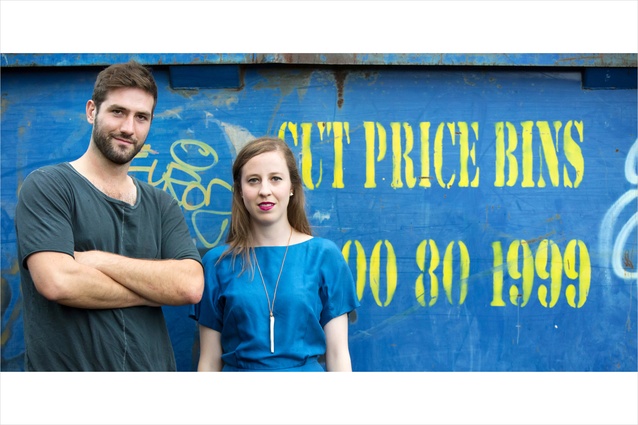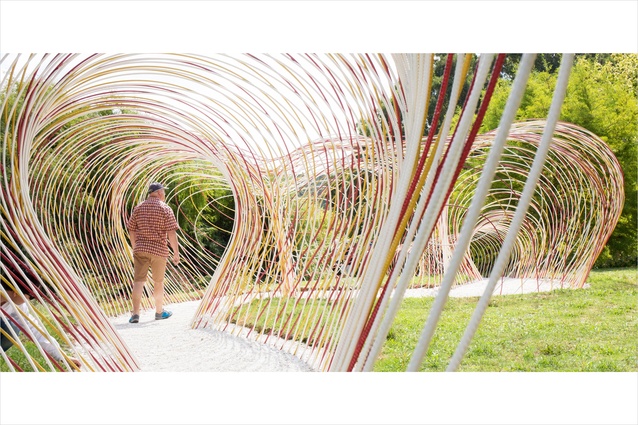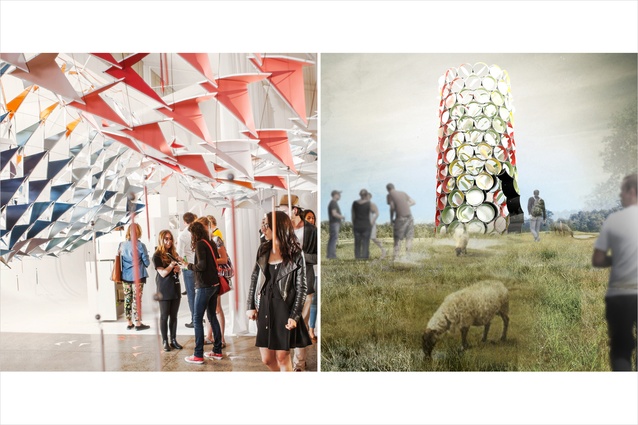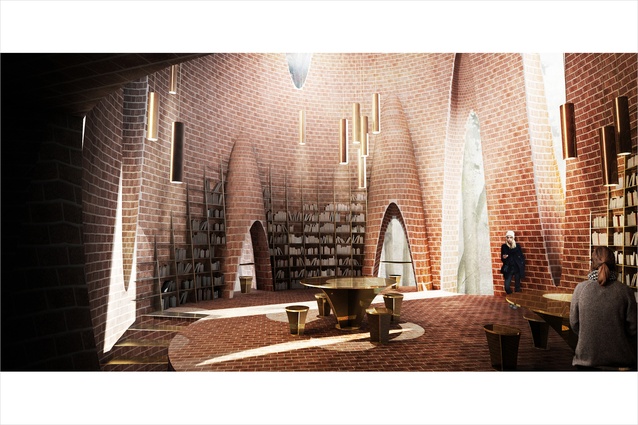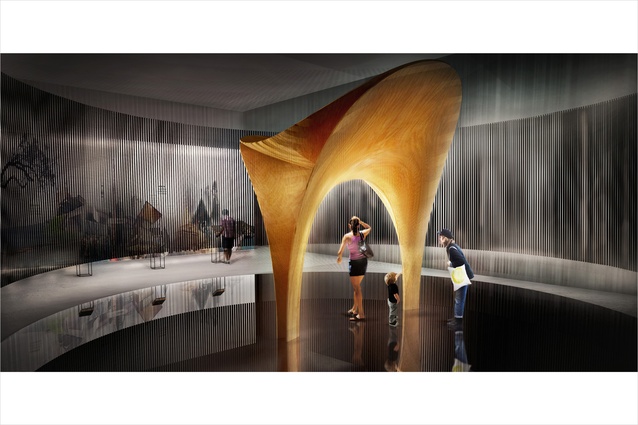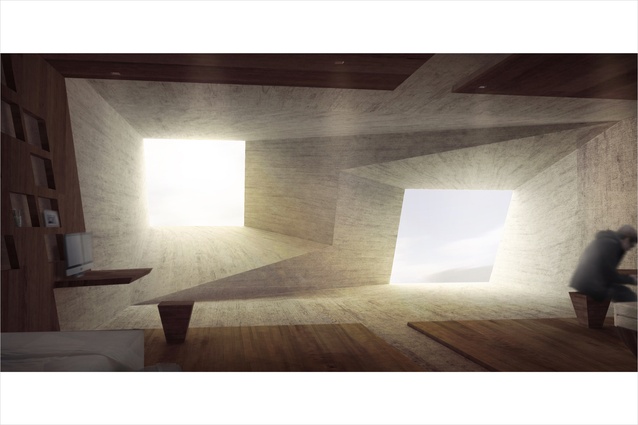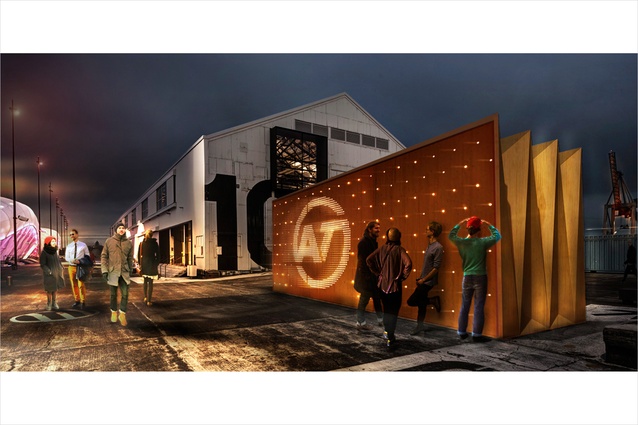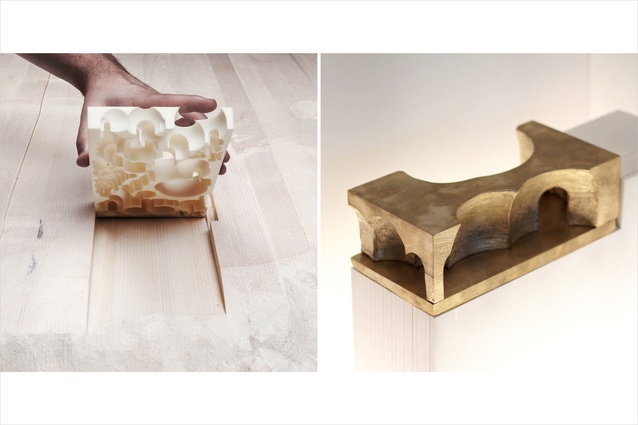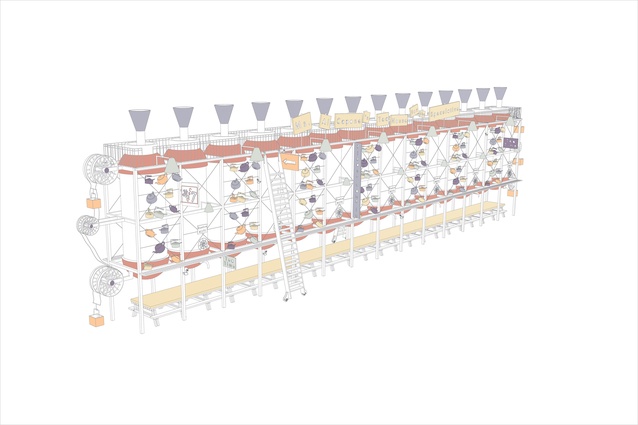On the rise
Architectural graduates Alexander Sacha Milojevic and Raphaela Rose were part of the Brick Bay Folly 2016 winning team for their Daughter of the Swamp installation. Following on from this success, ArchitectureNow caught up with the two of them to discuss future plans and ideal projects.
ArchitectureNow: Were you drawn to architecture from a young age?
Raphaela Rose: Growing up with an academic mother who taught town planning at the university, as one of three sisters we were always taught to open our eyes up to the city. Family holidays were spent looking at the Hundertwasser toilets or on Art Deco Tours around Napier city. I think this is where my love for the built environment started and it was only natural that I would gravitate to a profession that had the ability to influence it.
Alexander Sacha Milojevic: My parents met at the architecture school in Toronto and like a lot of architects’ kids we were surrounded by architecture talk and there was no getting away from it. Many of their friends were architects, and that meant site visits. As kids we travelled to see family in Canada and Europe and by the time I got to university I’d been to many memorable landscapes and buildings.
The first things about form, space and light which caught my attention were on archaeological sites. My most vivid memories as a child are of landscapes of rubble in Sicily where a spatial imagination was key to understanding and reconstructing amphitheatres, temple complexes and cities. I took photographs of beautiful things and so I learnt aesthetic principles from my first cameras. With only 36 exposures, and pocket money to develop the film, it was a challenge to compose and capture what I found interesting.
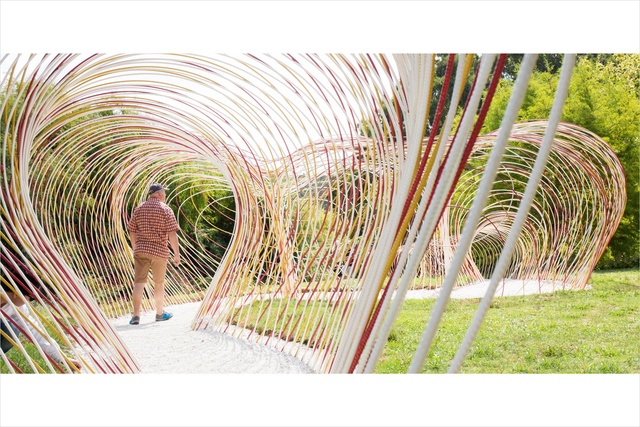
ANow: What are some of the projects you have worked on thus far in your career that you have enjoyed the most?
ASM: My first practical experience was in Manuel Aires Mateus’ studio in Lisbon. There I started by producing massing models of a great house for a Parisian art collector couple. It was a perfect start. I witnessed my collection of polystyrene models discussed in three languages during a client meeting at Manuel’s home.
At Patterson Associates I really enjoyed starting on a cast concrete house project near Queenstown and progressing to an apartment building in Remuera. A house museum set in a garden in Christchurch, that I’m currently working on, is an idealistic, beautiful and completely rare opportunity.
RR: As someone who operates across practice and research I have managed to work on a wide variety of projects. Nothing has been more satisfying as finishing my master’s thesis – a body of work I could truly call my own which allowed me the space and time to explore the type of designer I wanted to be.
I feel very fortunate to have worked on a project at Jasmax for AUT, which has the ability to influence Auckland at a city scale. In the formulation of new public space it will not only have significant impact on the students and academics for which the building is designed, but also the wider central Auckland community.
ANow: Do you feel that architecture school prepared you for the realities of working in the industry?
RR: I feel a successful architecture school should provide you with the forum to understand and explore ideas, methodologies and theory in order for one to discover their position as an architect. Did architecture school prepare me for the realities of the industry? Not at all but I believe it’s not its place and this can only be learnt on the job.
ASM: Similarly, I’d never believed that the role of architecture school was to prepare me for the realities of practice. I think that Pattersons appreciated that my thesis year was a unique opportunity for intense exploration and production. I would hope this is the same for all employers.
It is crucial that architecture schools are at the forefront of research, ingenuity and creative endeavour – engaging with stimulating visitors, presenters and critics who challenge traditional thinking. My final year was a full schedule of design tutoring, lasercutting technician work, entering competitions, and supporting other students’ projects so the pace of the office was not a shock. It was an important preparation.
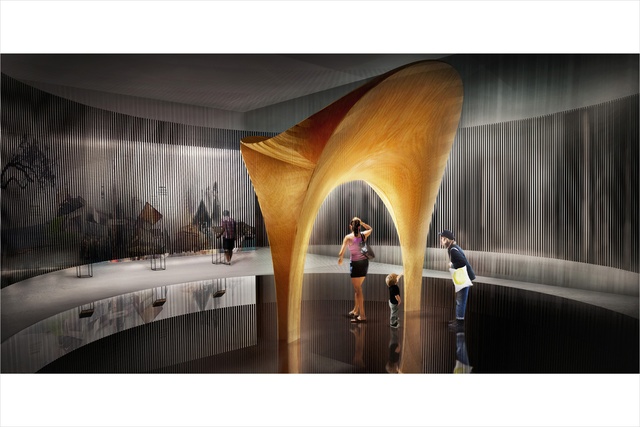
ANow: You’re both working full-time at Pattersons and Jasmax. How do you find the time to complete out-of-hours projects such as the Brick Bay folly?
ASM: As a design and build project, the folly was a whole new level of after-hours commitment. Even though as a team we spent every hour we possibly could on it, we were reliant on those around us for half the physical labour. We were fortunate our friends and family were interested in the work, saw our plight and came to our aid. They made it happen but the four of us work hard and play hard.
I have a tendency for trying to do everything. I have not cut down on my hours since finding the confidence to work more quickly, always with the hope of becoming a better designer. I’ve always worked late into the night, usually with a beer, a coffee and loud music. Despite this, I have not been willing to sacrifice social life or sports, apart from the odd football practice or game for the Unimount Mountaineers.
RR: I have since left Jasmax to work in Spain with the great feminist architect Susana Torre on a proposal for a museum for the History of American Women on the National Mall in Washington D.C. I will then continue on to work in New York. Completing the folly whilst working full time was a huge challenge – we worked full days at our respective practices only to continue on to paint reinforcing bar late into the night.
We were all so fortunate to work at practices that supported our endeavors and emerging growth. We also could not have done it without an incredible support network that painted with us, dug trenches and brought beers when spirits were low, including my father who flew in from Samoa just to help.
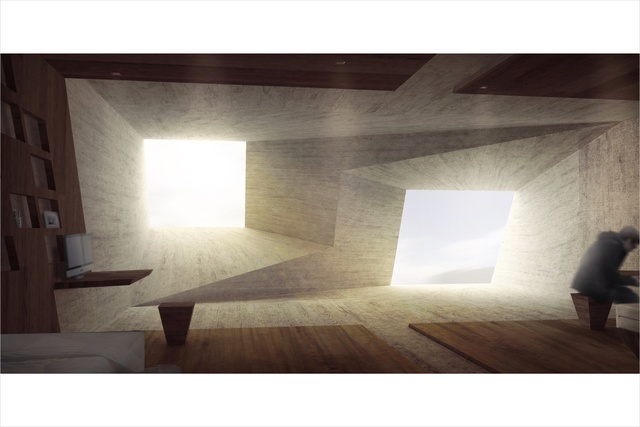
ANow: If you could design a building anywhere in New Zealand, what type would it be and where?
RR: If my dreams can true, a Hire-a-Hubby Mart directly opposite Auckland SkyCity Casino. I hear a lot has opened up since the old Palace Hotel tragically had to be demolished and the Ngatea Whatua room got booked up.
The Hire-a-Hubby Mart is an implied enlarged, humanised vending machine. It engages with the De Wallen sexualised typology of the Amsterdam brothel window, however, detournes the programmatic offering through presenting an opposing gendered service of hiring a helping hand around the house – with an implication that more may well be offered. On specifying the chosen hubby he will magically pop out for you to take away home and if he is in use this will be signified by the close of the curtain.
ASM: Perhaps I would most value the opportunity to work on a park in an urban setting. The intersection of landscape, sculpture and building fascinates me. Honestly, it is exciting not knowing what projects I’ll be working on in the future, especially as fabrication technologies for mass customisation become more prevalent and affordable in the building industry.
I spent my thesis year imagining an enormous architectural fantasy for the university’s Newmarket campus and now that one of the project models is in the Future Islands exhibition at the Venice Biennale, it encourages me to revisit the project. Possibly one day I will!
ANow: What are some helpful words of advice that you would give to architectural students, that you wish you had been given?
RR: My supervisor told me in my final year to make the most of reading, exploring and being a bit wild, as this will become limited once the realities of practice hits. I wish I’d heard this day one of architecture school. A better architect is one who’s seen the world rather than the inside walls of a studio.
ASM: I actually was given this advice and I still adhere to it – your most important project is your next one. The skills and ideas you gain on any project are useful for the ones that follow, and it is crucial to remember that, even (or especially) when things aren’t going well. Throughout school I was given a lot of advice, not only by teachers and mentors but also at home around the dinner table with my lecturer and practitioner parents. The problem was having the understanding, motivation, knowledge and skill to use it.
What I advise students is that what cannot be taught is the passion and enthusiasm that very often comes from adventures and random stuff, it needs to be experienced and translated into places and events. Stay interested, and, for me, travel works. The architecture you are looking for might come from an unexpected place and you need the confidence to work with it.
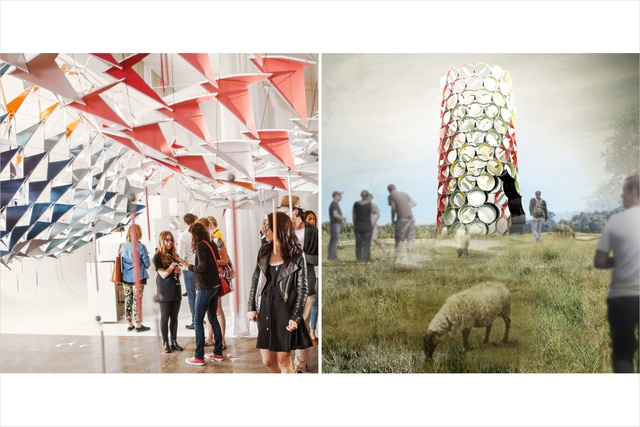
ANow: What do you enjoy most about working in architecture?
ASM: What I enjoy most about working in this field is how I have become constantly aware of the interesting ways in which the world is made. Things are done surprisingly differently from one practice to another, one place to another and our ways of speaking of architecture is often quite different. I love learning about sites and customs and materials, and in this regard everything is a learning experience. Addressing design in different places means working outside preconceived ideas and relies on subconscious and intuitive design knowledge.
RR: I love that as architects we have the ability to create something everyday which has the capacity to make positive changes for how people go about their daily lives, whether it be through enhanced aestheticism or clever programming. This is extremely powerful and cannot be said for all professions.
ANow: What other projects have you completed together prior to the Daughter of the Swamp? What strengths do you each bring to the equation?
RR: Daughter of the Swamp is the third project Sacha and I have completed together. From our time at university Sacha and I have had a great working dynamic built on the basis of strong friendship – this is integral in moments when times get tough. Sacha and I both work through design issues together, however, our processes are drastically different which helps in a project to explore different iterations before arriving at a final design.
ASM: Raphaela and I have known each other since taking extracurricular French language classes during intermediate school. A few years later, we both worked in the architecture school library shelving books for Wendy Garvey and the next year found ourselves together in first year. Despite this we didn’t really consider each other’s work until we worked together during the Aires Mateus studio in our master’s degree and then supporting each other through the thesis year.
Raphy is worldly, analytical and evaluative. She’s so skilled graphically, colouristically and she is always challenging herself and me to come up with better ideas and solutions. Most importantly, what we have in common is a passion for making things, starting with a high standard of representation and translating this into the completion of a design project.

